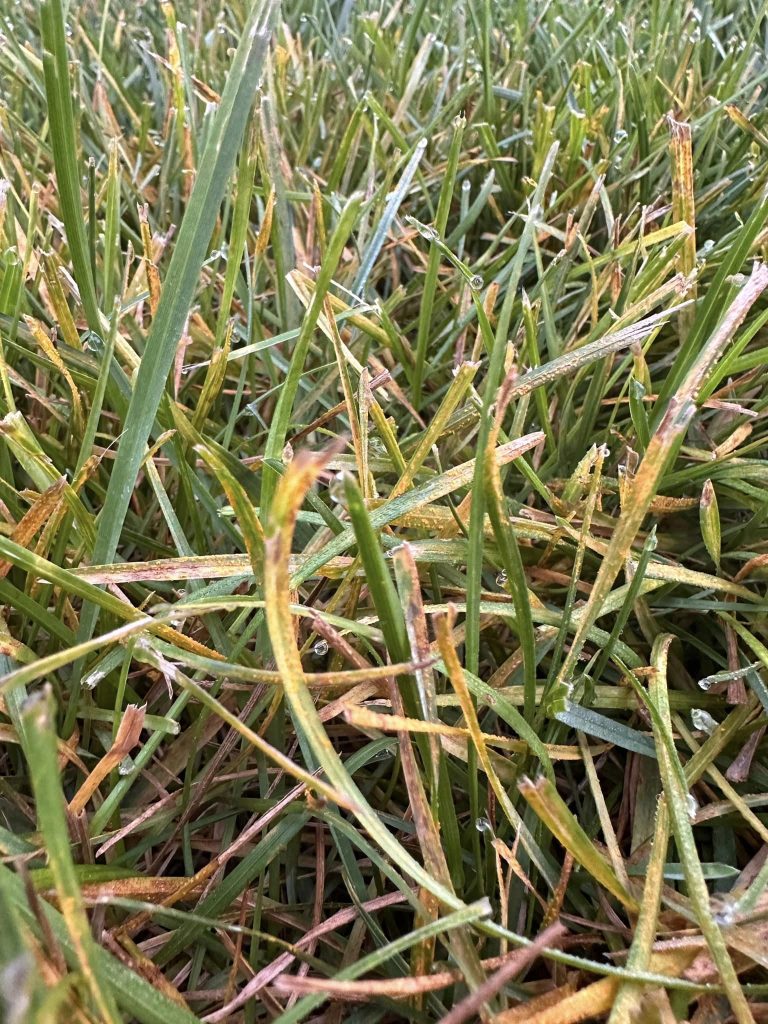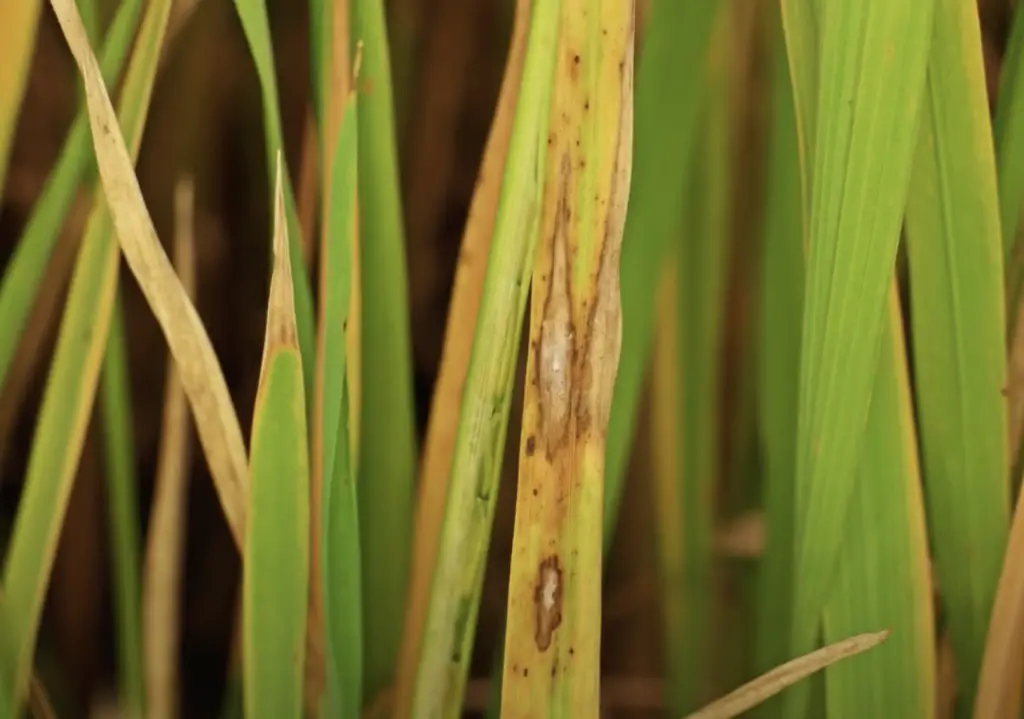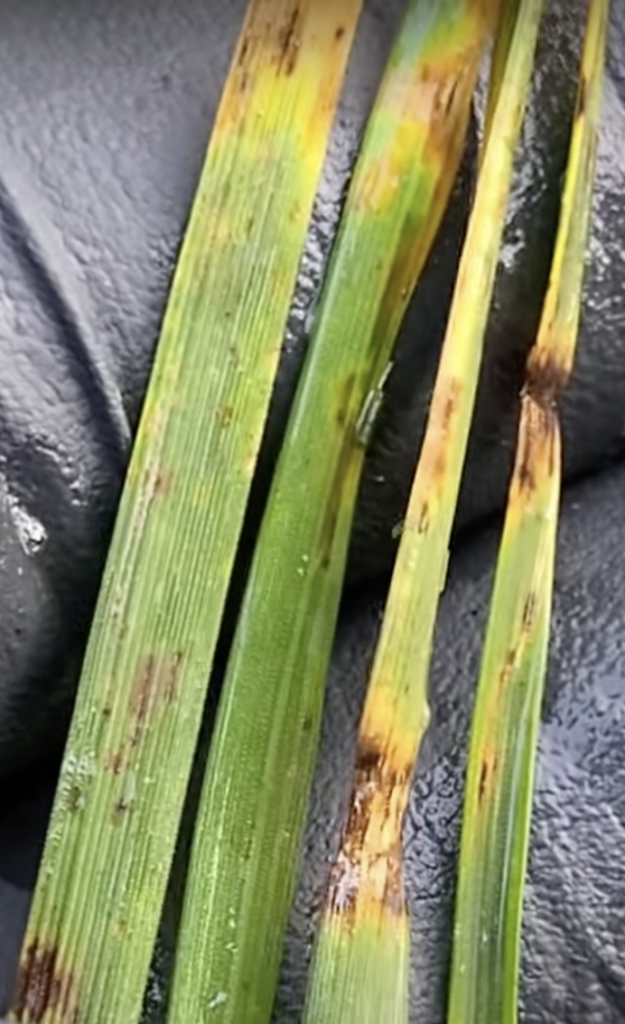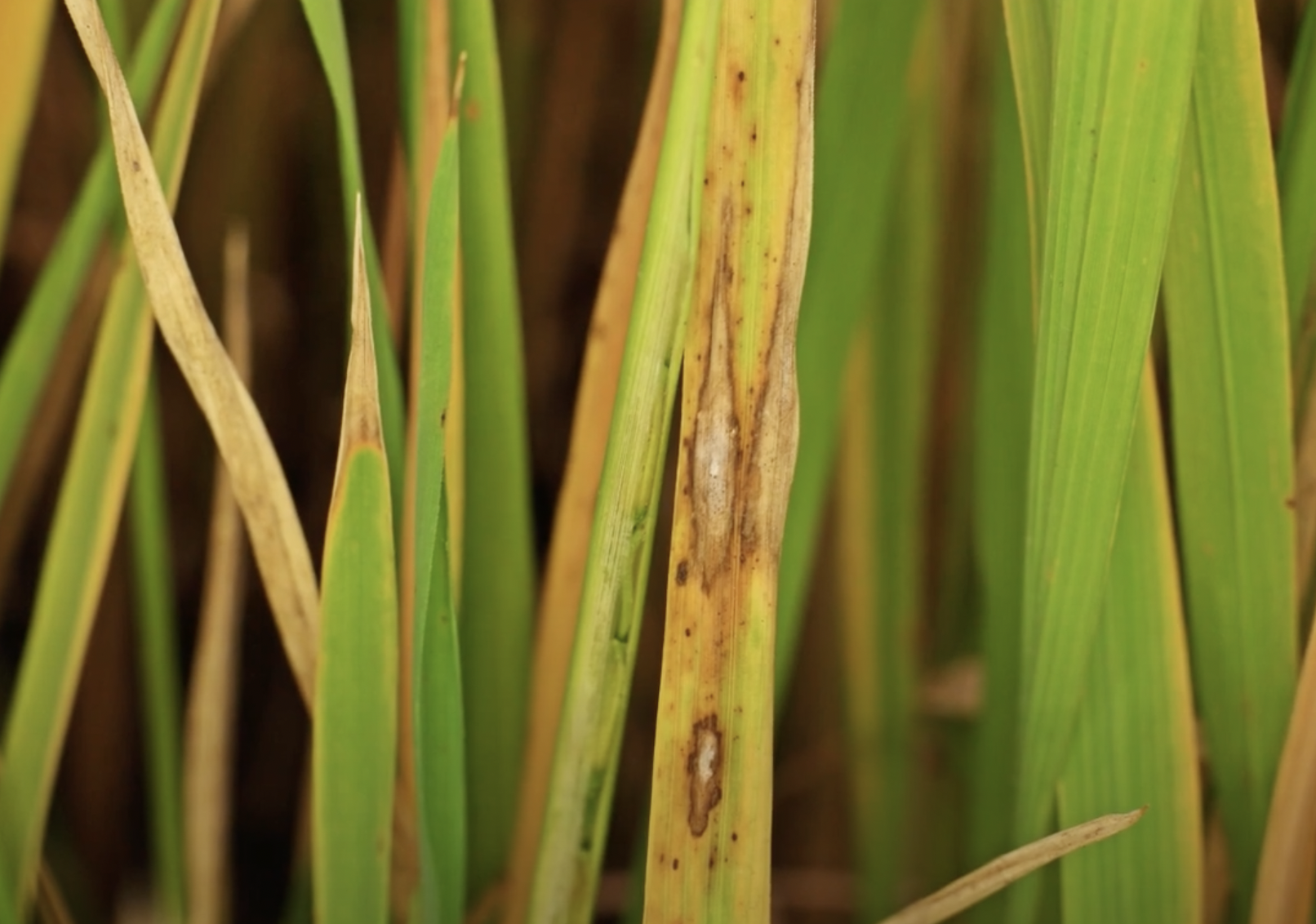Melting out disease is a common lawn disease caused by a fungus. I see a lot of it up here in New England. Though similar to leaf spot, melting out disease is a cool weather disease while melting out disease is a warm weather disease. Kentucky bluegrass lawns are among the most vulnerable grass types to this condition, but it also affects tall fescue and ryegrass lawns. The cool, rainy conditions of April and early May are especially conducive to developing this lawn disease. The following information will help you identify and control melting out disease.
Introduction to Melting Out Disease
Melting out disease is caused by the fungus Bipolaris sorokiniana. The reason it’s often confused with leaf spot is because symptoms closely resemble one another; however, leaf spot is a summer disease caused by a different type of fungus. Melting out disease features two distinct phases. The first phase occurs during spring. Property owners may notice black spots or brownish-black spots on grass blades. As cool, rainy weather persists, the disease attacks crowns and roots, causing the grass rot and die. If you suspect your lawn has leaf spot, it’s best to consult with the lawn care experts at Lawn Phix. The disease can cause permanent damage to lawns, especially if left untreated. Severely damaged turf may need to be removed.
Identifying Melting Out Disease
Melting out disease impacts grass during the spring. Cool temperatures and spring rains are conducive to the spread of this fungus. The telltale symptom of melting out disease are the brown or black spots that occur on leaf blades. During the second phase of the disease, grass crowns and roots are subject to rot. High nitrogen fertilizers during the spring may also be conducive to the spread of melting out disease. Melting out fungus causes symptoms in lawns that are similar to other fungal diseases, and even though a different fungal infection causes it, it can still be treated like other fungal lawn diseases. It’s important to act fast to provide effective control of the disease.



How to Get Rid of Melting Out Disease
If your lawn has melting out disease, there are steps you can take to manage it. As with leaf spot and other similar lawn diseases, melting out disease can be managed with the following:
Chemical Measures
Property owners can rely on fungicides to kill common lawn diseases like melting out fungus. It can be helpful to alternate fungicides in order to reduce the risk of resident diseases. Some common fungicides I use to kill melting out diseases include:
- Propiconazole
- Myclobutanil
- Iprodione
- Thiophanate-methyl
- Azoxystrobin
Alternating fungicides every month from spring through summer is ideal. Use of the same chemical can lead to the development of disease resistance. The good news is the lawn fungicides above will also target leaf spot at the same rates – so you can’t go wrong even if you misdiagnose the two diseases.
Cultural Controls
There are several practices that property owners can employ to control both melting out and leaf spot symptoms. These practices include:
- Adjusting (usually reducing) watering practices. It’s best to water early in the morning and avoid watering in the evening.
- Avoid use of high nitrogen fertilizer in early spring as it favors the growth of disease.
- Raise the lawn mower’s mowing height.
- Improve soil aeration (reduce soil compaction).
- Remove excessive thatch.
- Reduce shade if possible.
If you suspect you may have lawn diseases such as melting out disease or leaf spot, it’s best to contact Lawn Phix to let our lawn care pros identify the fungal pathogens affecting your lawn. We can develop a plan to combat diseases like melting out fungus.
Melting Out Disease FAQs
How do you treat melting out disease?
Alternating fungicides known to kill the melting out fungus can help you kill the infection. If you choose to combat the disease on your own, be sure to read labels closely to ensure that fungicide applications are able to kill melting out disease.
What causes leaf spot and melting out diseases?
Though similar, leaf spot and melting out disease are caused by different types of fungi. Disease symptoms are similar, but the conditions occur in different seasons. Fortunately, both diseases can be controlled with similar solutions such as the use of common fungicides.

